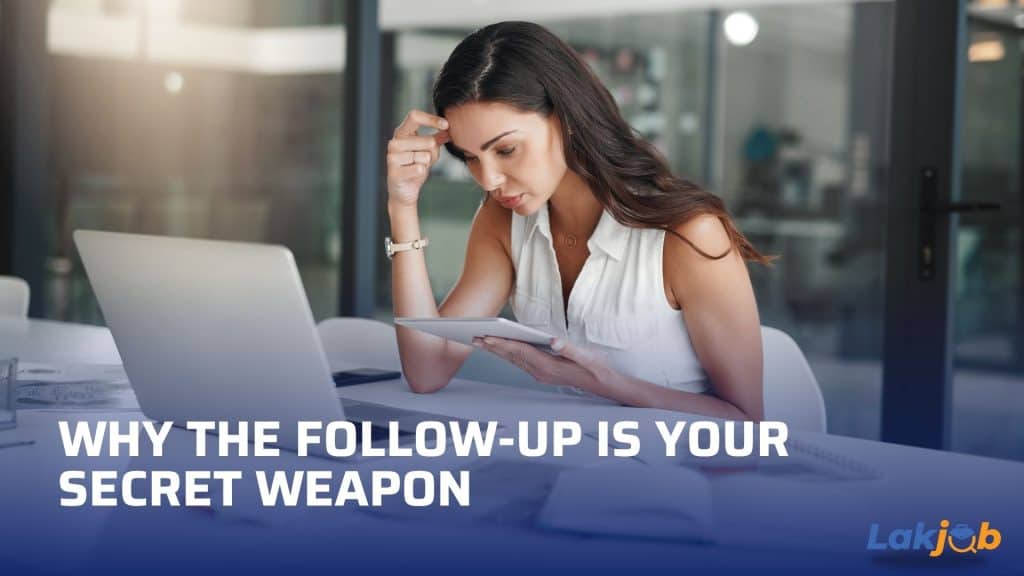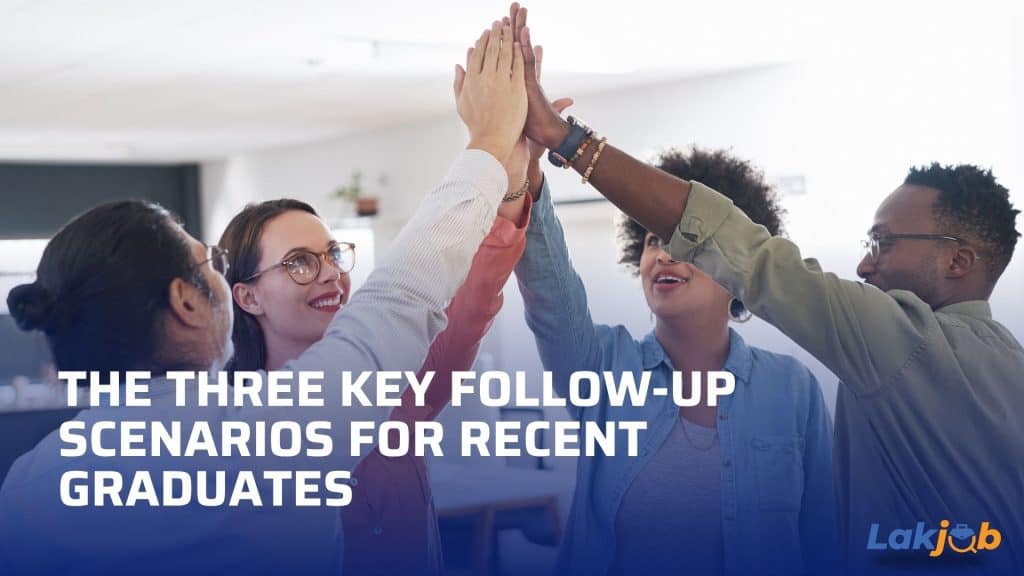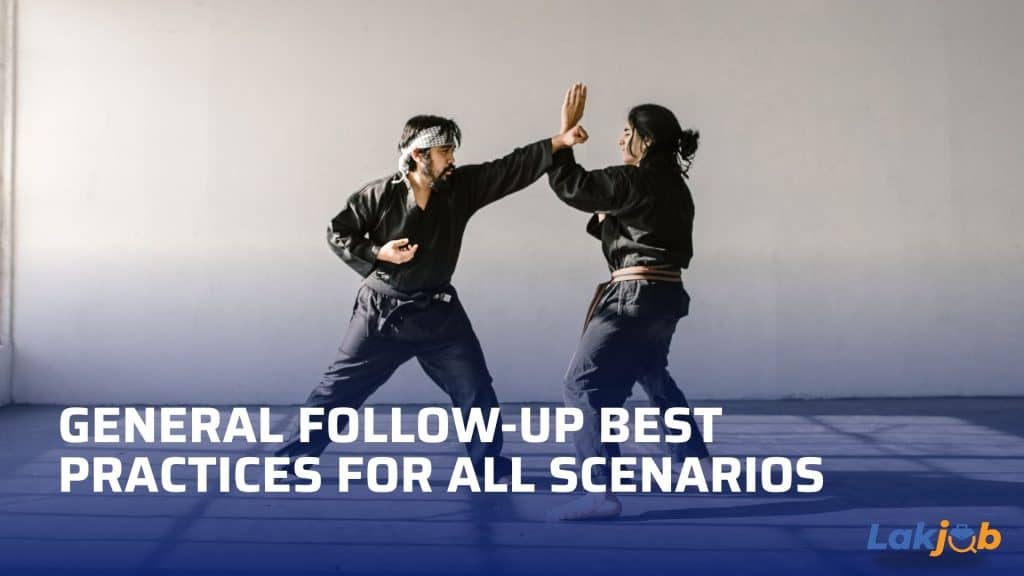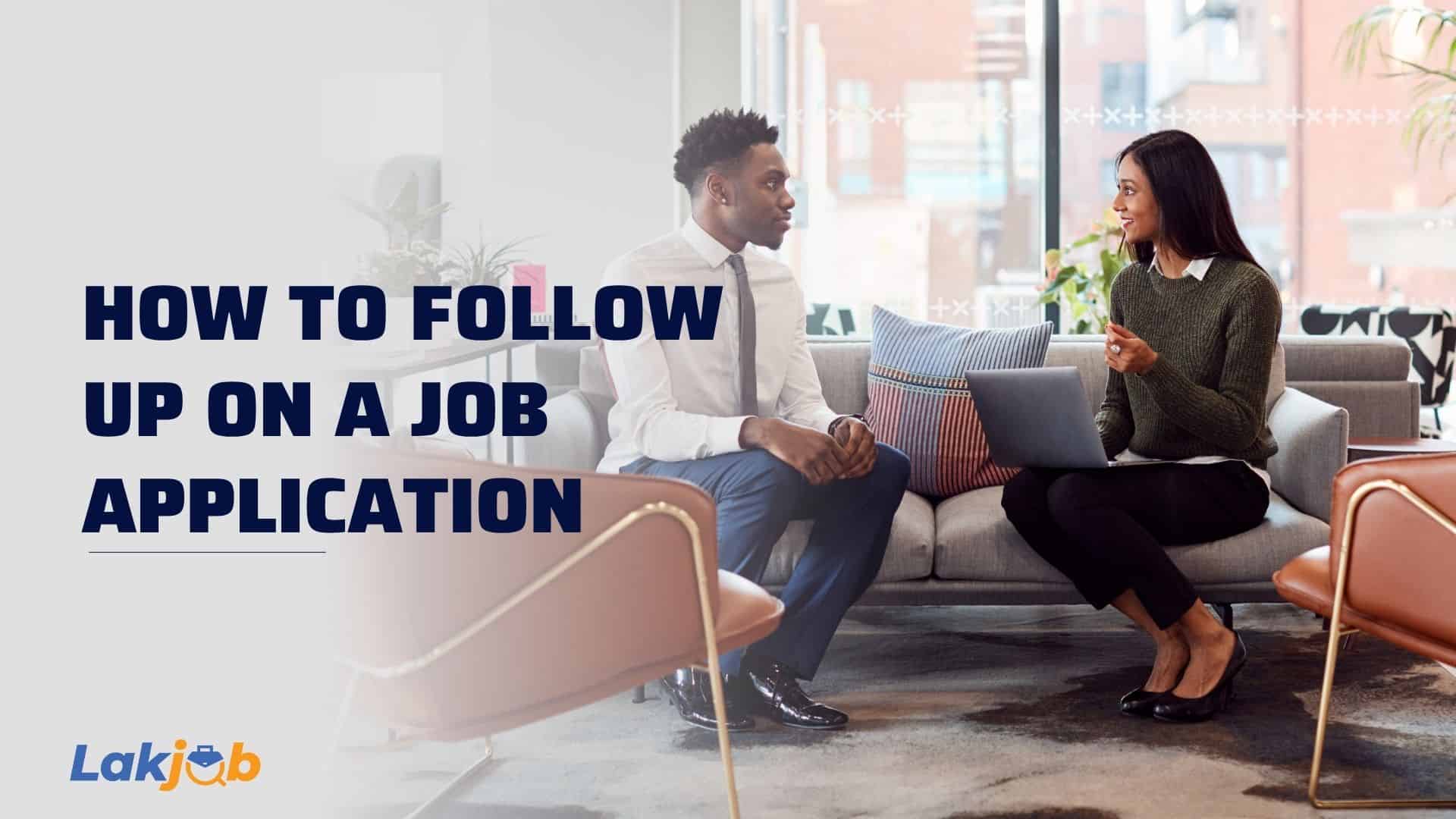You’ve spent hours perfecting your resume, crafting a compelling cover letter, and meticulously submitting your application for that dream entry-level job in the U.S. market.
Now, the waiting game begins. But is “waiting” truly the best strategy?
You might be wondering: How to follow up on a job application without seeming impatient or pushy?
This critical step, often overlooked by recent graduates, can significantly increase your visibility, reiterate your enthusiasm, and ultimately tip the scales in your favor.
This guide will demystify the art of the strategic follow-up, providing actionable steps and expert insights to help you navigate the post-application phase with confidence.
For a broader understanding of how to best submit your initial application, including whether is it better to apply online or in person, explore our related resources.
Accelerate your path to your first professional role in the United States.
Why the Follow-Up is Your Secret Weapon

In a competitive job market, simply applying isn’t enough. Recruiters and hiring managers are inundated with applications, especially for entry-level roles.
A well-timed and professionally executed follow-up can make all the difference.
The Power of Proactive Communication:
- Demonstrates Enthusiasm & Initiative: A follow-up shows you’re genuinely interested in the role and willing to go the extra mile qualities highly valued by employers.
- Boosts Visibility: It brings your application back to the top of the pile, reminding the hiring team of your candidacy, especially if they’re reviewing hundreds of resumes.
- Reiterates Fit & Value: It provides a brief opportunity to reinforce your most relevant skills or how your qualifications align with the job, adding another layer of persuasion.
- Showcases Professionalism: A well-written follow-up email confirms your strong communication skills and attention to detail.
- Bridges Gaps: If there’s a slight delay in the hiring process, your follow-up can gently prompt action without being aggressive.
Insight: While the average recruiter spends only 7 seconds reviewing a resume, a thoughtful follow-up email can extend their engagement with your candidacy by reminding them of your value and commitment. It’s a small effort with potentially large returns.
The Three Key Follow-Up Scenarios for Recent Graduates

Your follow-up strategy will depend on the stage of the application process. For recent graduates, understanding these distinct scenarios is crucial for effective communication.
1. Following Up on a Job Application (No Interview Yet)
This is the most common scenario for entry-level job seekers. You’ve submitted your application and haven’t heard anything back after the initial confirmation.
- When to Follow Up:
- When to Follow Up:
- Wait at least 2 weeks (10 business days) after applying, especially if the job posting didn’t specify a timeline. This gives the hiring team ample time to review initial applications. For more insights on optimizing your initial submission timing, see When Is The Best Time To Apply For Jobs?
- If the job posting did provide a timeline (e.g., “We will contact qualified candidates within 1 week”), wait until after that deadline has passed.
- Who to Contact:
- Ideally, the Hiring Manager for the position.
- If the hiring manager’s name isn’t available, try to find the Recruiter handling the role (often listed on LinkedIn).
- If neither is identifiable, a general email to the HR department’s public contact or the email address listed in the job posting may be your only option (less ideal, but better than nothing).
- How to Contact (Preferred Methods):
- Email (Most Common & Professional): This is the gold standard. It’s non-intrusive and provides a written record.
- LinkedIn Message: If you’ve connected with the recruiter or hiring manager on LinkedIn, a polite message can be effective.
- Phone (Use with Caution): Only consider a brief phone call if you haven’t received an email response after a follow-up email, and the industry/company culture suggests it’s appropriate (e.g., smaller businesses, very direct industries). Be prepared for voicemails.
- What to Include in Your Email (Key Components):
- Clear Subject Line: Include the job title and your name.
- Example: “Following Up: [Job Title] Application – [Your Name]”
- Polite Salutation: Address the hiring manager/recruiter by name if possible (“Dear Mr./Ms. [Last Name]”). If not, “Dear [Department Name] Hiring Team” or “Dear Hiring Manager.”
- Reference Application: State the exact job title and the date you applied.
- Reiterate Interest: Briefly express your continued enthusiasm for the role and the company.
- Add Value (Briefly): Highlight one key skill or qualification that makes you a strong fit, linking it to the job description. Do not re-send your entire resume unless specifically asked.
- Example: “My proven ability in [specific skill, e.g., ‘data analysis using Tableau’] directly aligns with the data interpretation responsibilities mentioned in the role.”
- Call to Action: Express your eagerness to discuss your qualifications further.
- Professional Closing: “Sincerely,” “Best regards,” followed by your name and contact information.
- Clear Subject Line: Include the job title and your name.
Example Follow-Up Email (Application): Subject: Following Up: Entry-Level Marketing Assistant Application – Jane Doe
Dear Ms. Davis,
I hope this email finds you well.
I am writing to follow up on my application for the Entry-Level Marketing Assistant position at [Company Name], which I submitted on [Date, e.g., May 20th].
I remain very enthusiastic about this opportunity and am confident that my proven skills in social media content creation and digital analytics would be a strong asset to your team. During my time as Social Media Coordinator for the University Marketing Club, I successfully developed and executed campaigns that significantly increased engagement, directly aligning with the responsibilities outlined in your posting.
Thank you again for your time and consideration. I look forward to hearing from you regarding the next steps in the hiring process.
Sincerely,
Jane Doe [Your Phone Number] [Your Professional Email] [Your LinkedIn Profile URL]
Actionable Tip: Keep your follow-up brief, polite, and value-driven. Your goal is to gently remind them of your strong fit, not to demand a response.
2. Following Up After a Recruiter Contact
If a recruiter has reached out to you (e.g., after an “Easy Apply” or a LinkedIn connection), your follow-up should acknowledge their contact and reiterate your interest.
- When to Follow Up:
- Within 24 hours after your initial interaction (e.g., after a brief screening call or initial LinkedIn message).
- If you’re waiting for a next step (e.g., an interview invitation) and the recruiter gave a timeline, wait until after that timeline. If no timeline, wait 3-5 business days.
- Who to Contact: The recruiter who contacted you.
- How to Contact: Reply to their email or message on LinkedIn.
- What to Include:
- Reference their initial contact and the specific role.
- Express continued enthusiasm.
- Reiterate a key skill or experience that makes you a good fit.
- Inquire about the next steps.
Example Follow-Up Email (Recruiter Contact): Subject: Re: Entry-Level Marketing Assistant Opportunity
Dear Mr. Chen,
Thank you again for reaching out regarding the Entry-Level Marketing Assistant position. I truly appreciate you taking the time to discuss the role with me yesterday/on [Date].
I remain very interested in this opportunity and am confident that my experience in [specific skill, e.g., ‘creating engaging digital content’] and my dedication to learning would be a valuable contribution to [Company Name]’s marketing initiatives.
Could you please provide an update on the next steps in the hiring process, and what the expected timeline is?
Thank you for your guidance.
Best regards,
[Your Name]
Actionable Tip: Be prompt and professional. Recruiters manage many candidates, so a polite and concise follow-up helps you stay top-of-mind.
3. Following Up After an Interview
This is the most critical follow-up. It’s not just a courtesy; it’s an extension of your interview performance.
- When to Follow Up:
- Within 24 hours of the interview (ideally the same day, especially after a morning interview).
- If you had multiple interviewers, send a separate, personalized email to each interviewer.
- Who to Contact: Each person you interviewed with. If you don’t have their email, send it to the recruiter and ask them to forward it, or look them up on LinkedIn.
- How to Contact: Email is preferred.
- What to Include in Your Email:
- Express Gratitude: Thank them for their time and the opportunity.
- Reference Specifics: Mention something specific you discussed during the interview (e.g., a project, a challenge, a company value). This shows active listening and personalization.
- Reiterate Fit: Briefly connect your skills/experience to a specific point discussed.
- Reaffirm Enthusiasm: Emphasize your continued strong interest in the role and the company.
- Call to Action: Express eagerness for the next steps.
Example Follow-Up Email (After Interview): Subject: Thank You – Entry-Level Marketing Assistant Interview – [Your Name]
Dear Ms. Thompson,
Thank you so much for taking the time to speak with me yesterday about the Entry-Level Marketing Assistant position. I truly enjoyed learning more about [Company Name]’s upcoming digital campaigns and the collaborative nature of your marketing team.
Our discussion about [mention a specific point, e.g., “your approach to A/B testing in email marketing”] particularly resonated with me. My experience in [specific skill, e.g., ‘analyzing campaign performance data for academic projects’] would allow me to quickly contribute to these efforts.
I am very enthusiastic about the opportunity to join your team and contribute to [Company Name]’s innovative work. Thank you again for your time and consideration.
Sincerely,
[Your Name] [Your Phone Number] [Your Professional Email] [Your LinkedIn Profile URL]
Actionable Tip: Personalization is key for interview follow-ups. A generic “thank you” can be easily dismissed. A thoughtful, specific one reinforces your strongest points.
General Follow-Up Best Practices for All Scenarios

Regardless of the follow-up scenario, these principles will ensure your communication is always professional and impactful.
- Keep it Concise & Professional: Hiring managers are busy. Your email should be brief (3-5 sentences max per paragraph), respectful of their time, and free of grammatical errors or typos.
- Maintain a Positive Tone: Even if you’re feeling anxious, project confidence, politeness, and enthusiasm. Avoid sounding desperate or demanding.
- Proofread Meticulously: A typo in a follow-up email can undermine all your previous efforts. Read it aloud, use grammar checkers, and ask a friend to review.
- Add Value, Don’t Repeat: Don’t just re-state what’s in your resume or previous email. Find a small piece of new value, a specific connection, or a brief reinforcement.
- Be Patient (But Persistent): Follow up when appropriate, but then allow time for the process to unfold. Avoid sending multiple emails within a short timeframe.
- Respect Their Process: If they state a specific timeline, adhere to it. If you’ve sent a follow-up email and haven’t heard back, sending another within a week is usually too soon unless you have new, relevant information (e.g., another job offer).
- Know When to Move On: Sometimes, despite your best efforts, you won’t hear back. Understand that this is part of the job search. Continue applying to other opportunities.
Insight: Your follow-up strategy is a delicate balance of persistence and politeness. It’s about maintaining a professional presence without becoming a nuisance.
Conclusion: Your Proactive Path to Visibility
Understanding how to follow up on a job application is a crucial, yet often underestimated, skill for recent graduates entering the U.S. job market.
A strategic follow-up whether after an initial application, a recruiter contact, or a key interview is your opportunity to re-engage, reiterate your enthusiasm, and reinforce your unique value proposition.
By mastering the timing, tailoring your messages, and adhering to professional communication standards, you transform mere waiting into proactive visibility.
This commitment to thoughtful follow-up not only showcases your initiative and professionalism but also significantly enhances your chances of moving forward in the hiring process.
Arm yourself with this strategic approach, and confidently step forward into your job search.
Your future in the U.S. job market is waiting, and a well-executed follow-up is your key to unlocking it.
F.A.Q
Q1: How long should I wait before following up on a job application if I haven’t heard back?
A1: For an initial job application where you haven’t had an interview yet, it’s generally best to wait at least two weeks (10 business days) after submitting your application. This gives the hiring team sufficient time to review initial submissions. If the job posting specified a timeline, wait until after that deadline has passed.
Q2: Who should I address my follow-up email to if I don’t know the hiring manager’s name?
A2: Always try to find the Hiring Manager’s name or the Recruiter’s name handling the role (e.g., on LinkedIn). If you cannot find a specific name, use a professional general salutation like “Dear Hiring Manager,” “Dear [Department Name] Hiring Team,” or “Dear [Company Name] Team.” Avoid generic greetings like “To Whom It May Concern.”
Q3: What’s the most important thing to include in a follow-up email after an interview?
A3: The most important thing is personalization. Beyond expressing gratitude, mention something specific you discussed during the interview (e.g., a project, a challenge, a company value) and briefly connect how your skills/experience align with that point. This shows active listening, reinforces your fit, and makes your follow-up memorable.
Q4: Should I attach my resume again in a follow-up email?
A4: Generally, no, you should not attach your entire resume again in a follow-up email unless the recipient specifically requests it. Your follow-up should be concise and value-driven. If you need to reference a specific skill or achievement, briefly mention it in the email body, reminding them where to find the full details in your initial application.
Q5: How many times should I follow up for the same job?
A5: In most cases, one polite, well-timed follow-up after the initial application (if no interview) and one personalized thank-you/follow-up after an interview is sufficient. Sending multiple follow-ups within a short timeframe (e.g., less than a week apart) is usually too aggressive and can be perceived negatively. If you haven’t heard back after your strategic follow-up, it’s often best to move on to other opportunities.
I specialize in managing and auditing end-to-end HR functions, ensuring full compliance with state and federal regulations. I partner with leadership to drive strategic HR initiatives and implement necessary changes. My core strength lies in identifying, hiring, and training top talent to enhance team performance and support organizational growth.





